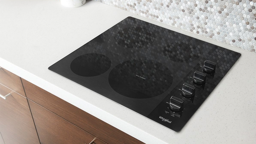Solar power doesn’t have to be hard on the pocketbook. And it has many uses, such as making pathways safer to navigate at night, heating water for an outdoor shower and warming floors. Here’s an overview of solar projects for various skill levels.
IDEA #1: Light It Up
An easy DIY project
Solar lighting is popular for outdoor use because it’s easy to install.
Solar lights use solar cells that convert sunlight into electricity, which is stored in batteries for use at night. The lights work well as long as the cells receive the manufacturer’s recommended hours of sunlight. When choosing products, consider your geographic location as well as your specific home site. Ideally, the lights should receive at least some direct sunlight every day.
Make sure the lights aren’t shaded or blocked by trees, shrubs or garden structures. Also, keep in mind that solar lights are better suited to defining a boundary (such as a walkway) or spotlighting a garden than illuminating an entire area.
Some solar lights are self-contained, whereas others have a remote solar-cell panel (only the panel needs to receive direct sunlight). Fixtures range from small, red-glowing pathway markers to landscape accent lights to hanging lanterns to pole-mounted security floodlights.
Down-lighting is recommended for walkways to maximize illumination and minimize light pollution (which in turn maximizes your stargazing enjoyment and keeps you at peace with neighbors).
Accent lights such as hanging lanterns will enhance decks, foliage and water features. You may also want to investigate floating solar lights for ponds and other water features. Fixture color is a matter of personal preference, but if you really want to show off your landscaping, neutral-colored fixtures might be a better choice than stainless steel or brass.
Make sure replacement bulbs are available, or you’ll be throwing your money away when something breaks. Look for fixtures that use rechargeable batteries, such as nickel-cadmium, that can be purchased anywhere.
The old adage “You get what you pay for” is very true with solar lights. There are plenty of inexpensive plastic lights at big-box stores, but there’s no guarantee they’ll all work once they’re in the ground. Better-quality lights with a metal housing cost $25 to $30 each, but are more rugged and will stand up to all kinds of weather.
If you don’t care for the soft amber glow of traditional solar lights, newer fixtures have LED bulbs that produce a brighter white light.
IDEA #1: Light It Up
An easy DIY project
Solar lighting is popular for outdoor use because it’s easy to install.
Solar lights use solar cells that convert sunlight into electricity, which is stored in batteries for use at night. The lights work well as long as the cells receive the manufacturer’s recommended hours of sunlight. When choosing products, consider your geographic location as well as your specific home site. Ideally, the lights should receive at least some direct sunlight every day.
Make sure the lights aren’t shaded or blocked by trees, shrubs or garden structures. Also, keep in mind that solar lights are better suited to defining a boundary (such as a walkway) or spotlighting a garden than illuminating an entire area.
Some solar lights are self-contained, whereas others have a remote solar-cell panel (only the panel needs to receive direct sunlight). Fixtures range from small, red-glowing pathway markers to landscape accent lights to hanging lanterns to pole-mounted security floodlights.
Down-lighting is recommended for walkways to maximize illumination and minimize light pollution (which in turn maximizes your stargazing enjoyment and keeps you at peace with neighbors).
Accent lights such as hanging lanterns will enhance decks, foliage and water features. You may also want to investigate floating solar lights for ponds and other water features. Fixture color is a matter of personal preference, but if you really want to show off your landscaping, neutral-colored fixtures might be a better choice than stainless steel or brass.
Make sure replacement bulbs are available, or you’ll be throwing your money away when something breaks. Look for fixtures that use rechargeable batteries, such as nickel-cadmium, that can be purchased anywhere.
The old adage “You get what you pay for” is very true with solar lights. There are plenty of inexpensive plastic lights at big-box stores, but there’s no guarantee they’ll all work once they’re in the ground. Better-quality lights with a metal housing cost $25 to $30 each, but are more rugged and will stand up to all kinds of weather.
If you don’t care for the soft amber glow of traditional solar lights, newer fixtures have LED bulbs that produce a brighter white light.
IDEA #2: Make a Splash
Medium DIY difficulty
A water fountain in a water garden or pond is a natural for solar power, as long as the fountain pump is in direct view of the sun. Sure, you could buy a fountain, but you can also build your own. Here’s an overview of the project:
1. First, choose a container. You can use a half-barrel, a ceramic or clay pot, a galvanized tub or anything else that holds water. If there’s a hole in the bottom, line the container with a heavy sheet of plastic.
2. Choose a pump. Fountain pumps are sized according to water flow rate in gallons per hour (GPH) Match the size of the pump to your water garden or pond. A pump that’s too small will provide a trickle rather than a stream, whereas one that’s too big will suck up all the water in the fountain (then seize up from running on empty).
Here are some guidelines for pump sizes:
• For a small- to medium-sized tabletop fountain, you’ll only need a 45 to 65 GPH pump.
• For a large outdoor fountain, you’ll want a flow of 100 gallons per hour for every inch of width of the stream of water your fountain produces. For example, if your fountain has a 5-inch stream, you’ll want a pump that delivers 500 GPH.
• For a large pond waterfall, you may need a pump that can handle 2,000-plus GPH.
Also check the pump’s lift specifications, which indicate the height of the spray. A 17-inch lift works well for a patio-size fountain, but you may want a lift as high as 4 feet for a larger pond fountain.
You can buy a solar fountain pump for as little as $11, though most are in the $50 to $100 range.
3. Choose a solar panel. For the solar panel, you’ll need to at least match the voltage of the panel to that of the pump. So for a 6-volt pump you need at least a 6-volt panel, but a 12-volt panel is best if you want to maximize the use of the pump on cloudy days. Twelve-volt panels start at about $50. Six-volt panels start at $25.
4. Hook it all up. Next, if you’re using a container, fill it with water. And then submerge your pump beneath the surface of your water garden (or pond). Hook it up to your solar panel and you’re ready to go.
Medium DIY difficulty
A water fountain in a water garden or pond is a natural for solar power, as long as the fountain pump is in direct view of the sun. Sure, you could buy a fountain, but you can also build your own. Here’s an overview of the project:
1. First, choose a container. You can use a half-barrel, a ceramic or clay pot, a galvanized tub or anything else that holds water. If there’s a hole in the bottom, line the container with a heavy sheet of plastic.
2. Choose a pump. Fountain pumps are sized according to water flow rate in gallons per hour (GPH) Match the size of the pump to your water garden or pond. A pump that’s too small will provide a trickle rather than a stream, whereas one that’s too big will suck up all the water in the fountain (then seize up from running on empty).
Here are some guidelines for pump sizes:
• For a small- to medium-sized tabletop fountain, you’ll only need a 45 to 65 GPH pump.
• For a large outdoor fountain, you’ll want a flow of 100 gallons per hour for every inch of width of the stream of water your fountain produces. For example, if your fountain has a 5-inch stream, you’ll want a pump that delivers 500 GPH.
• For a large pond waterfall, you may need a pump that can handle 2,000-plus GPH.
Also check the pump’s lift specifications, which indicate the height of the spray. A 17-inch lift works well for a patio-size fountain, but you may want a lift as high as 4 feet for a larger pond fountain.
You can buy a solar fountain pump for as little as $11, though most are in the $50 to $100 range.
3. Choose a solar panel. For the solar panel, you’ll need to at least match the voltage of the panel to that of the pump. So for a 6-volt pump you need at least a 6-volt panel, but a 12-volt panel is best if you want to maximize the use of the pump on cloudy days. Twelve-volt panels start at about $50. Six-volt panels start at $25.
4. Hook it all up. Next, if you’re using a container, fill it with water. And then submerge your pump beneath the surface of your water garden (or pond). Hook it up to your solar panel and you’re ready to go.
IDEA #3: Banish THOSE Chilly Floors
DIY? Only if you're Bob Vila
Solar hydronic radiant floor systems come in many flavors. In one popular system, a solar-heated liquid circulates through a heat exchanger in a storage tank. And hot water is sent out to heat your home through in- or under-floor tubing. These systems run on low water temps (100 to 130 degrees), so they’re ideal for wood floors, but can also be installed under carpet, tile and linoleum. (As a bonus, the water coming from the solar storage tank can also meet your domestic hot water needs.)
Radiant systems powered by solar are not cheap and installing a system is complex, but a very handy do-it-yourselfer – with access to a customer support hotline – can save money by doing the installation himself/herself.
Some manufacturers offer products that are ideal for a cabin retrofit, for your entire place or just one room.
First of all, you need a solar collection and distribution system, from panels to piping that connects to a solar storage tank to solar hot-water controls.
The larger the square footage of your flooring, the larger the solar array you’ll need. Some examples:
• To heat 500 to 600 sq. ft., one or two solar panels will suffice.
• For 1,800 to 2,000 sq. ft., five solar panels should do it.
• For 2,500 sq. ft. – six to seven panels.
To give you an idea of cost: A five-solar-panel package including mounting hardware and struts; mechanicals, storage tanks; controls; sensors, heat pump and high-temperature override, will set you back at least $9,000 plus shipping.
Hydronic radiant floor heat can be installed either over a wood or concrete subfloor or underneath the subfloor (in between joists). Typically, grooved panels are fastened to the subfloor after removal of the existing floor covering. Flexible tubing snaps into the grooves and conveys heated water to warm the floors.
Under-floor systems cost less upfront, but are also less energy-efficient because they require higher water temperatures to perform effectively. Conversely, over-the-floor systems cost more upfront but are more energy-efficient. According to HouseEnergy.com, radiant-floor heating systems range overall from $3 to $10 per sq. ft.
Viega, a manufacturer of radiant floor systems, prices its Climate Panel over-the-floor system from $9 to $10 per sq. ft. Climate Trak, which is installed below the subfloor, runs $6 per sq. ft. The company estimates that it would take approximately 2 to 2½ hours to install the Climate Panel system in a 12x12-foot room.
Another manufacturer, Radiantec, suggests that for an average size home (1,500 to 2,500 sq. ft.), a good rule of thumb is $1.75 to $2 per sq. ft. for all the necessary components, excluding the heat source. To install Radiantec’s under-joist system, you’ll need a heat gun, heavy-duty staple gun, tubing cutter (not hacksaw) and tape measure.
Few manufacturers sell directly to consumers, so you’ll probably need to purchase components through a supplier or distributor.
Having escorted dozens of cheap plastic solar lights to the trash can, Susan Bady vows to pay for quality from now on.
READER RESOURCES:
• Landscape Lighting Online, www.landscapelightingonline.com
• Improvements, www.improvementscatalog.com
• Radiantec, www.radiantec.com
• Viega, www.viega.net.
DIY? Only if you're Bob Vila
Solar hydronic radiant floor systems come in many flavors. In one popular system, a solar-heated liquid circulates through a heat exchanger in a storage tank. And hot water is sent out to heat your home through in- or under-floor tubing. These systems run on low water temps (100 to 130 degrees), so they’re ideal for wood floors, but can also be installed under carpet, tile and linoleum. (As a bonus, the water coming from the solar storage tank can also meet your domestic hot water needs.)
Radiant systems powered by solar are not cheap and installing a system is complex, but a very handy do-it-yourselfer – with access to a customer support hotline – can save money by doing the installation himself/herself.
Some manufacturers offer products that are ideal for a cabin retrofit, for your entire place or just one room.
First of all, you need a solar collection and distribution system, from panels to piping that connects to a solar storage tank to solar hot-water controls.
The larger the square footage of your flooring, the larger the solar array you’ll need. Some examples:
• To heat 500 to 600 sq. ft., one or two solar panels will suffice.
• For 1,800 to 2,000 sq. ft., five solar panels should do it.
• For 2,500 sq. ft. – six to seven panels.
To give you an idea of cost: A five-solar-panel package including mounting hardware and struts; mechanicals, storage tanks; controls; sensors, heat pump and high-temperature override, will set you back at least $9,000 plus shipping.
Hydronic radiant floor heat can be installed either over a wood or concrete subfloor or underneath the subfloor (in between joists). Typically, grooved panels are fastened to the subfloor after removal of the existing floor covering. Flexible tubing snaps into the grooves and conveys heated water to warm the floors.
Under-floor systems cost less upfront, but are also less energy-efficient because they require higher water temperatures to perform effectively. Conversely, over-the-floor systems cost more upfront but are more energy-efficient. According to HouseEnergy.com, radiant-floor heating systems range overall from $3 to $10 per sq. ft.
Viega, a manufacturer of radiant floor systems, prices its Climate Panel over-the-floor system from $9 to $10 per sq. ft. Climate Trak, which is installed below the subfloor, runs $6 per sq. ft. The company estimates that it would take approximately 2 to 2½ hours to install the Climate Panel system in a 12x12-foot room.
Another manufacturer, Radiantec, suggests that for an average size home (1,500 to 2,500 sq. ft.), a good rule of thumb is $1.75 to $2 per sq. ft. for all the necessary components, excluding the heat source. To install Radiantec’s under-joist system, you’ll need a heat gun, heavy-duty staple gun, tubing cutter (not hacksaw) and tape measure.
Few manufacturers sell directly to consumers, so you’ll probably need to purchase components through a supplier or distributor.
Having escorted dozens of cheap plastic solar lights to the trash can, Susan Bady vows to pay for quality from now on.
READER RESOURCES:
• Landscape Lighting Online, www.landscapelightingonline.com
• Improvements, www.improvementscatalog.com
• Radiantec, www.radiantec.com
• Viega, www.viega.net.
 dreamstime.com
dreamstime.com 












